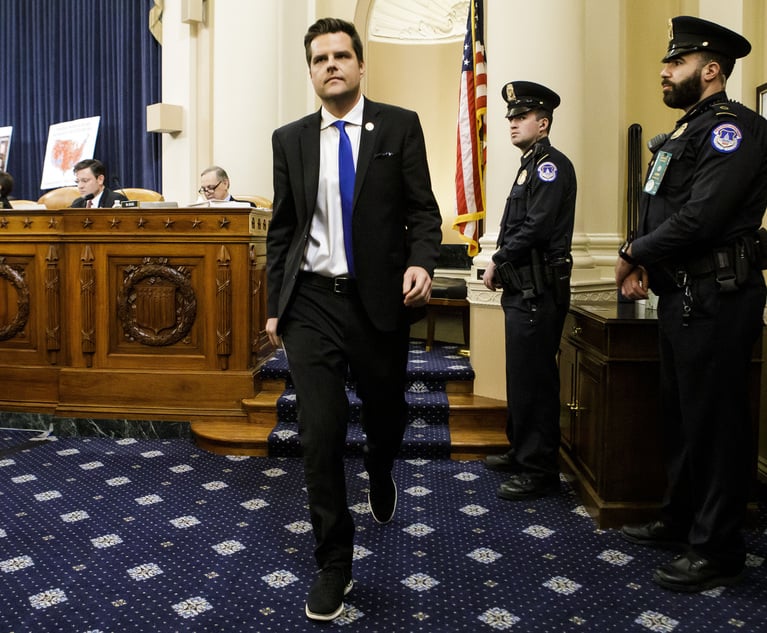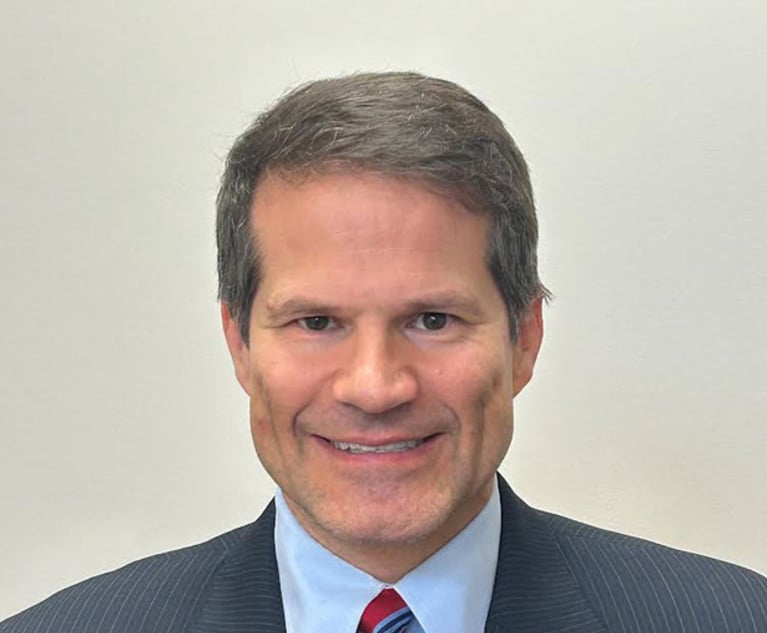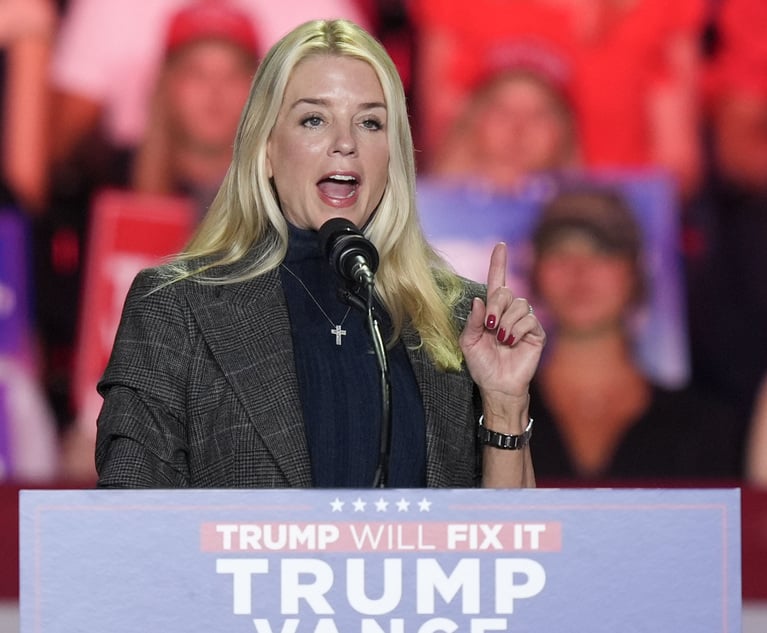 David E. Schwartz and Risa M. Salins
David E. Schwartz and Risa M. SalinsImmigration in Flux
Labor Relations columnists David E. Schwartz and Risa M. Salins discuss changes to immigration regulations could have significant impact in the employment context.
December 06, 2018 at 02:46 PM
9 minute read
Anticipated changes to immigration regulations could have significant impact in the employment context. The Department of Homeland Security (DHS), in its fall 2018 regulatory agenda (Fall Regulatory Agenda), announced plans to implement new rules to make the H-1B and H-4 visa programs consistent with President Trump's Buy American Hire American Executive Order, signed on April 18, 2017, which seeks to create higher employment rates for U.S. workers and ensure H-1B visas are awarded to the most-skilled or highest-paid beneficiaries. Subsequently, on Dec. 3, 2018, DHS and United States Citizenship and Immigration Services (USCIS) published a proposed regulation expected to prioritize H-1B applications for workers with advanced degrees from American universities. Moreover, on Nov. 19, 2018, the Department of Labor (DOL) began requiring employers to use a new H-1B labor condition application in order to promote greater transparency regarding the employment of foreign temporary workers.
In addition to these regulatory changes, President Trump recently reached an agreement with his Mexican and Canadian counterparts to remain in a North American Trade alliance and replace NAFTA with the newly named United States-Mexico-Canada Agreement (USMCA). It remains subject to ratification by the legislative bodies of all three countries. If ratified, USMCA is not likely to have an impact on labor mobility across the three countries but will require certain protections for workers.
This month's column reviews these recent federal initiatives and how they will affect employers.
|H-1B Visas
Several items on DHS's Fall Regulatory Agenda, which lists regulations anticipated for the rest of this year and into 2019, relate to H-1B visas. The H-1B visa program allows U.S. companies to temporarily employ foreign workers in specialty occupations that require the theoretical and practical application of a body of highly specialized knowledge and a bachelor's degree or higher in the specific specialty, or its equivalent. When USCIS receives more than enough petitions to reach the congressionally mandated H-1B cap, a computer-generated random selection process, or lottery, is used to select the petitions projected as needed to reach the cap.
The Fall Regulatory Agenda set forth DHS's plans to propose a “Registration Requirement for Petitioners Seeking to File H-1B Petitions on Behalf of Cap Subject Aliens,” consistent with the direction under the Buy American and Hire American Executive Order to help ensure H-1B visas are awarded to the most-skilled or highest-paid beneficiaries. Indeed, on Dec. 3, 2018, DHS and USCIS published this proposed new H-1B petition pre-registration rule (Proposed Rule) in the Federal Register for public review and comment through Jan. 2, 2019.
The Proposed Rule would make two significant changes to the current H-1B visa program. First, the Proposed Rule would require petitioners to pre-register with USCIS electronically in advance in order to participate in the H-1B lottery. Only those candidates who timely register and are then selected for adjudication in the lottery would proceed to submitting an H-1B petition. In the past, employers planning on filing an H-1B petition would directly send the complete H-1B petition packet to USCIS for processing under the H-1B lottery. One upside for employers is this new procedure would only require them to file petitions on behalf of employees who are successful in the lottery.
The second major change under the Proposed Rule would increase the likelihood that H-1B visas are allocated to individuals who possess a master's or higher degree from a U.S. institution of higher education. The Immigration and Nationality Act (INA) provides that each fiscal year 65,000 H-1B visas are available to skilled foreign workers. However, in 2004, Congress amended the INA to exempt from each fiscal year's H-1B cap up to 20,000 H-1B petitions filed on behalf of aliens with U.S.-earned master's, or higher, degrees. Accordingly, the current H-1B lottery system consists of two rounds. Only individuals with U.S. master's degrees or higher are eligible to participate in the first round, which awards 20,000 visas to successful applicants. The second round then allocates the remaining 65,000 slots from a much larger pool of individuals with at least a bachelor's degree, including those individuals who were unsuccessful in the first round. The Proposed Rule would change the order of the two rounds, by first selecting 65,000 individuals from the total pool of all pre-registered applicants, and then filling the remaining 20,000 exempt slots from a smaller pool of only those applicants with a master's degree or higher. DHS predicts that this change would likely award over 5,000 more H-1B visas for individuals with advanced degrees compared to the current lottery procedure.
Employers filing H-1B visa petitions should be aware that these proposed changes could be finalized and in place for the next April 2019 cap filings. While the demand for H-1B visas has continued to increase beyond the 85,000 cap (approximately 199,000 petitions were filed for 2018), employees with advanced degrees would have a better chance at receiving an H-1B Visa under the Proposed Rule.
The Fall Regulatory Agenda also indicated DHS's plans to move forward with a rule titled “Strengthening the H-1B Nonimmigrant Visa Classification Program” that would revise the definition of “specialty occupation” under the INA to increase focus on obtaining the best and the brightest foreign nationals via the H-1B program, and revise the definition of employment and employer-employee relationship to better protect U.S. workers and wages. A proposed rule has not been published to date.
|H-4 Visas
H-4 visas are issued to immediate family members of the H-1B visa holders, including the employee's spouse and children under 21 years of age. An Obama-era regulation extended eligibility for employment authorization to certain H-4 dependent spouses of H-1B visa holders, and in 2017 alone USCIS approved over 126,853 applications for work permits for H-4 visa holders. However, DHS's Fall Regulatory Agenda indicated DHS's intent to implement a rule that would terminate the eligibility of certain spouses of H-1B nonimmigrants to apply for work authorization under the H-4 visa program. DHS explained that some U.S. workers would benefit from such a rule by having a better chance at obtaining jobs that some of the population of H-4 workers currently hold.
Although DHS has not yet published this proposed rule, on Nov. 16, 2018, House Representatives Anna G. Eshoo and Zoe Lofgren introduced the H-4 Employment Protection Act which would prohibit the Trump administration from revoking the work authorization of spouses of H-1B visa holders. Lofgren said, “Prohibiting H-1B dependent spouses from working is of no benefit to our country, and if allowed to move forward, many of these families that can contribute so much to our workforce will simply move to countries with a more sensible approach to immigration.” It is too early to speculate how this issue will play out for H-4 visa holders.
|DOL Forms
Effective Nov. 19, 2018, employers seeking to file H-1B petitions must use the DOL's new Labor Condition Application (Form ETA-9035). With the new Labor Condition Application, employers will now be required to provide more detailed information about their H-1B employment conditions, including all places of employment where it employs H-1B workers (e.g., client worksites), including for short periods of time; an estimate of the number of H-1B workers at each place of intended employment; clear identification of any secondary entities that are using H-1B workers; and documentation of education degrees for H-1B dependent employers claiming an exemption solely on the basis of education.
The Worker Complaint Form (Form WH-4) also was updated in October 2018 with new data fields to better capture descriptions of alleged program violations by employers. The DOL explained these changes are aimed at increasing compliance of the H-1B program, as well as providing greater transparency about temporary foreign employees.
|USMCA
On Sept. 30, 2018, the United States, Mexico and Canada reached agreement to remain in a North American trade alliance. The new agreement—USMCA—which is subject to ratification by the legislative bodies of all three countries, may replace the 24-year-old NAFTA. President Trump signed the USMCA on Nov. 30, 2018, and is expected to submit it to Congress for approval early next year.
The USMCA adopts the same immigration provisions and visa categories that existed under NAFTA for the temporary entry of business visitors or professional employees (TN visas), intra-company transfers for managers and executives (L-1 visas), as well as traders and investors (E-1 and E-2 visas). However, the USMCA adds an explicit commitment by all three North American countries to adopt anti-discrimination policies that protect workers on the basis of sex “including with regard to pregnancy, sexual harassment, sexual orientation, [and] gender identity.” In addition, the USMCA includes specific employment-related provisions impacting the automobile industry. In order to qualify for zero tariffs, an automobile must have 75 percent of parts made in the United States, Canada or Mexico. This is a boost from the current 62.5 percent requirement. Starting in 2020, at least 30 percent of the work done on the automobile must also be completed by workers earning at least $16 an hour. In 2023, that percentage increases to 40 percent for cars.
The USMCA still is subject to approval of Congress, as well as legislative bodies in Mexico and Canada. With a Democratic majority in the House next Congress, it remains unclear whether or not the USMCA will obtain the necessary support.
David E. Schwartz is a partner at the firm of Skadden, Arps, Slate, Meagher & Flom. Risa M. Salins is a counsel at the firm. Tate J. Wines, an associate at the firm, assisted in the preparation of this article.
This content has been archived. It is available through our partners, LexisNexis® and Bloomberg Law.
To view this content, please continue to their sites.
Not a Lexis Subscriber?
Subscribe Now
Not a Bloomberg Law Subscriber?
Subscribe Now
NOT FOR REPRINT
© 2024 ALM Global, LLC, All Rights Reserved. Request academic re-use from www.copyright.com. All other uses, submit a request to [email protected]. For more information visit Asset & Logo Licensing.
You Might Like
View All
From ‘Deep Sadness’ to Little Concern, Gaetz’s Nomination Draws Sharp Reaction From Lawyers
7 minute read
Trump Picks Personal Criminal Defense Lawyers for Solicitor General, Deputy Attorney General

Trending Stories
- 1Gibson Dunn Sued By Crypto Client After Lateral Hire Causes Conflict of Interest
- 2Trump's Solicitor General Expected to 'Flip' Prelogar's Positions at Supreme Court
- 3Pharmacy Lawyers See Promise in NY Regulator's Curbs on PBM Industry
- 4Outgoing USPTO Director Kathi Vidal: ‘We All Want the Country to Be in a Better Place’
- 5Supreme Court Will Review Constitutionality Of FCC's Universal Service Fund
Who Got The Work
Michael G. Bongiorno, Andrew Scott Dulberg and Elizabeth E. Driscoll from Wilmer Cutler Pickering Hale and Dorr have stepped in to represent Symbotic Inc., an A.I.-enabled technology platform that focuses on increasing supply chain efficiency, and other defendants in a pending shareholder derivative lawsuit. The case, filed Oct. 2 in Massachusetts District Court by the Brown Law Firm on behalf of Stephen Austen, accuses certain officers and directors of misleading investors in regard to Symbotic's potential for margin growth by failing to disclose that the company was not equipped to timely deploy its systems or manage expenses through project delays. The case, assigned to U.S. District Judge Nathaniel M. Gorton, is 1:24-cv-12522, Austen v. Cohen et al.
Who Got The Work
Edmund Polubinski and Marie Killmond of Davis Polk & Wardwell have entered appearances for data platform software development company MongoDB and other defendants in a pending shareholder derivative lawsuit. The action, filed Oct. 7 in New York Southern District Court by the Brown Law Firm, accuses the company's directors and/or officers of falsely expressing confidence in the company’s restructuring of its sales incentive plan and downplaying the severity of decreases in its upfront commitments. The case is 1:24-cv-07594, Roy v. Ittycheria et al.
Who Got The Work
Amy O. Bruchs and Kurt F. Ellison of Michael Best & Friedrich have entered appearances for Epic Systems Corp. in a pending employment discrimination lawsuit. The suit was filed Sept. 7 in Wisconsin Western District Court by Levine Eisberner LLC and Siri & Glimstad on behalf of a project manager who claims that he was wrongfully terminated after applying for a religious exemption to the defendant's COVID-19 vaccine mandate. The case, assigned to U.S. Magistrate Judge Anita Marie Boor, is 3:24-cv-00630, Secker, Nathan v. Epic Systems Corporation.
Who Got The Work
David X. Sullivan, Thomas J. Finn and Gregory A. Hall from McCarter & English have entered appearances for Sunrun Installation Services in a pending civil rights lawsuit. The complaint was filed Sept. 4 in Connecticut District Court by attorney Robert M. Berke on behalf of former employee George Edward Steins, who was arrested and charged with employing an unregistered home improvement salesperson. The complaint alleges that had Sunrun informed the Connecticut Department of Consumer Protection that the plaintiff's employment had ended in 2017 and that he no longer held Sunrun's home improvement contractor license, he would not have been hit with charges, which were dismissed in May 2024. The case, assigned to U.S. District Judge Jeffrey A. Meyer, is 3:24-cv-01423, Steins v. Sunrun, Inc. et al.
Who Got The Work
Greenberg Traurig shareholder Joshua L. Raskin has entered an appearance for boohoo.com UK Ltd. in a pending patent infringement lawsuit. The suit, filed Sept. 3 in Texas Eastern District Court by Rozier Hardt McDonough on behalf of Alto Dynamics, asserts five patents related to an online shopping platform. The case, assigned to U.S. District Judge Rodney Gilstrap, is 2:24-cv-00719, Alto Dynamics, LLC v. boohoo.com UK Limited.
Featured Firms
Law Offices of Gary Martin Hays & Associates, P.C.
(470) 294-1674
Law Offices of Mark E. Salomone
(857) 444-6468
Smith & Hassler
(713) 739-1250







